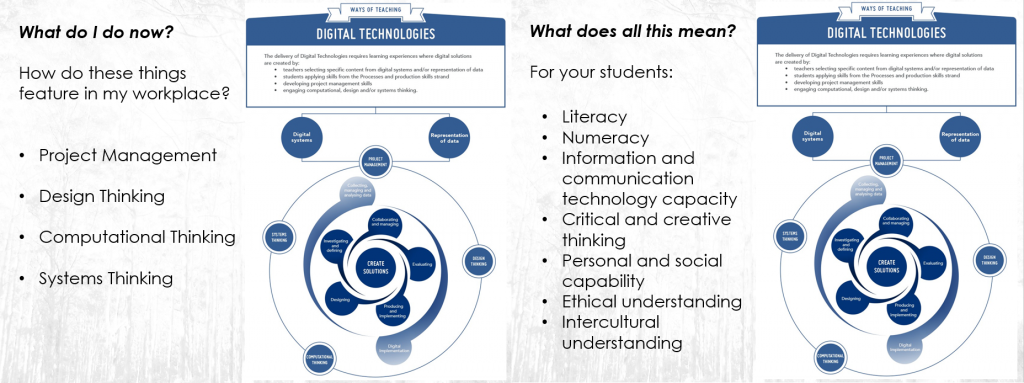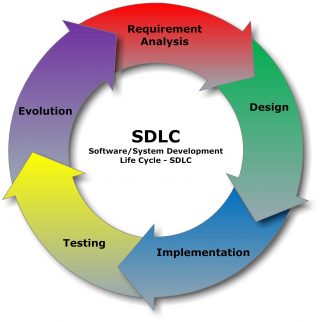In an extension to our support for the future generations (like our previous student mentoring efforts), last weekend I gave the closing keynote at the Educational Computing Association of Western Australia’s (ECAWA) State Conference – not to be confused with the “other” ECAWA in my life, the Environmental Consultants Association of Western Australia!
I’d met some of the ECAWA’s organising committee at another recent event, the Perth Natural Resource Management (NRM) event on “Using Digital Technology for Natural Resource Management (NRM)” , where I got to talk about how we work with a range of digital technology in the NRM sector. That talk is included below as a slideshare embedded talk – I realised while writing this blog that I didn’t get to blog about it back when I gave the talk, so here’s the talk:
My previous talk at the Perth NRM Forum
After that NRM talk, the ECAWA team asked me to come along and give the closing keynote to the educators that teach Digital Technology within our schools and universities. I had an absolute ball preparing this second talk, as I got to take the time to go back and look at what we’ve been doing at Gaia Resources for the past… almost 15 (!) … years, and even longer as I ended up looking back at my career to date.
One of the highlights for me of attending a half day at the ECAWA conference (they used the #ECAWA2018 hashtag if you want to get a look at what went on) was getting to go to the workshops in the afternoon before my keynote. The variety of workshops that the ECAWA put on was pretty inspiring – I saw workshops on:
- 3D Printing – working with web-based CAD software to design structures for 3D printing, and then seeing a few small ones printed out on a printer (using TinkerCAD)
- Robotics – using small robots (Ozbots) that ‘read’ the colours you drew on a track and responded appropriately,
- Plug and play hardware and coding – Kode Klix, a new little venture (started in Perth!) that is a kit-based teaching system to click together hardware, and program it in BLOCKLY,
- A great little workshop run by the Girls in Engineering group from UWA, where they showcased a series of little exercises and had a great discussion going on the future of engineering (which I found particularly interesting, but had to run around the workshops so couldn’t stay), and
- A range of other ones I couldn’t get to around curriculum, Augmented Reality.
In my closing keynote – which was full of pictures that out of context wouldn’t make sense, so no Slideshare for that! – for the conference I had a crack at wrapping up the conference, providing some inspiration about my own journey through technology, and got out of the way of the sundowner that was coming up at the end of the conference. What was pretty interesting for me was that in covering off on the main components of the curriculum that is used to teach digital technology – as summarised in the two slides I’ve reproduced below – I got to explain how we use these skills, or look for these skills for people joining our team at Gaia Resources.

A couple of slides from my keynote on the Digital Technologies curriculum
All of these are really important things to teach, and it was a little sobering I think to the audience to hear how we look for these things – and yet still struggle to see good candidates with these skills and attributes in our interviews. I tried to use this as one of those inspiration points for the audience – what they’re doing, and teaching, is really important and valuable in the workforce that their students enter.
One of the key take home points was making sure that the educators in the audience were area of a few models that we look at a lot – the Innovation Adoption Life Cycle, and the Software Development Life Cycle. These two things are things that we use regularly – the first in looking at which tech we should be using, and the second to look at how we deliver solutions to our clients. The second is one I didn’t really get to espouse much, but realising software development is cyclical brings about a certain level of responsibility to people involved in it.

The Software Development Life Cycle
At the sundowner, I had a few good chats to a range of people, and the one point that kept popping up in conversation was my summary of my personal lessons from my career – “Do things that will make your Mum proud.” It’s still something that I live by, it ends up being something that I mutter to myself in difficult situations. This is a statement that I don’t take lightly, and use it to explain how we work to many of our clients.
As keynotes went, I got some good feedback from the delegates, and afterwards via email, so I’m happy that I ended up hitting the mark. Hopefully, there’s some educators out there this week teaching their students about the Software Development Life Cycle – and helping the next generation to make their Mum proud, too.
Piers
P.S. If you’re reading this after ECAWA, feel free to get in touch via email, or start a conversation on our social media channels – Facebook, Twitter or LinkedIn.

Comments are closed.